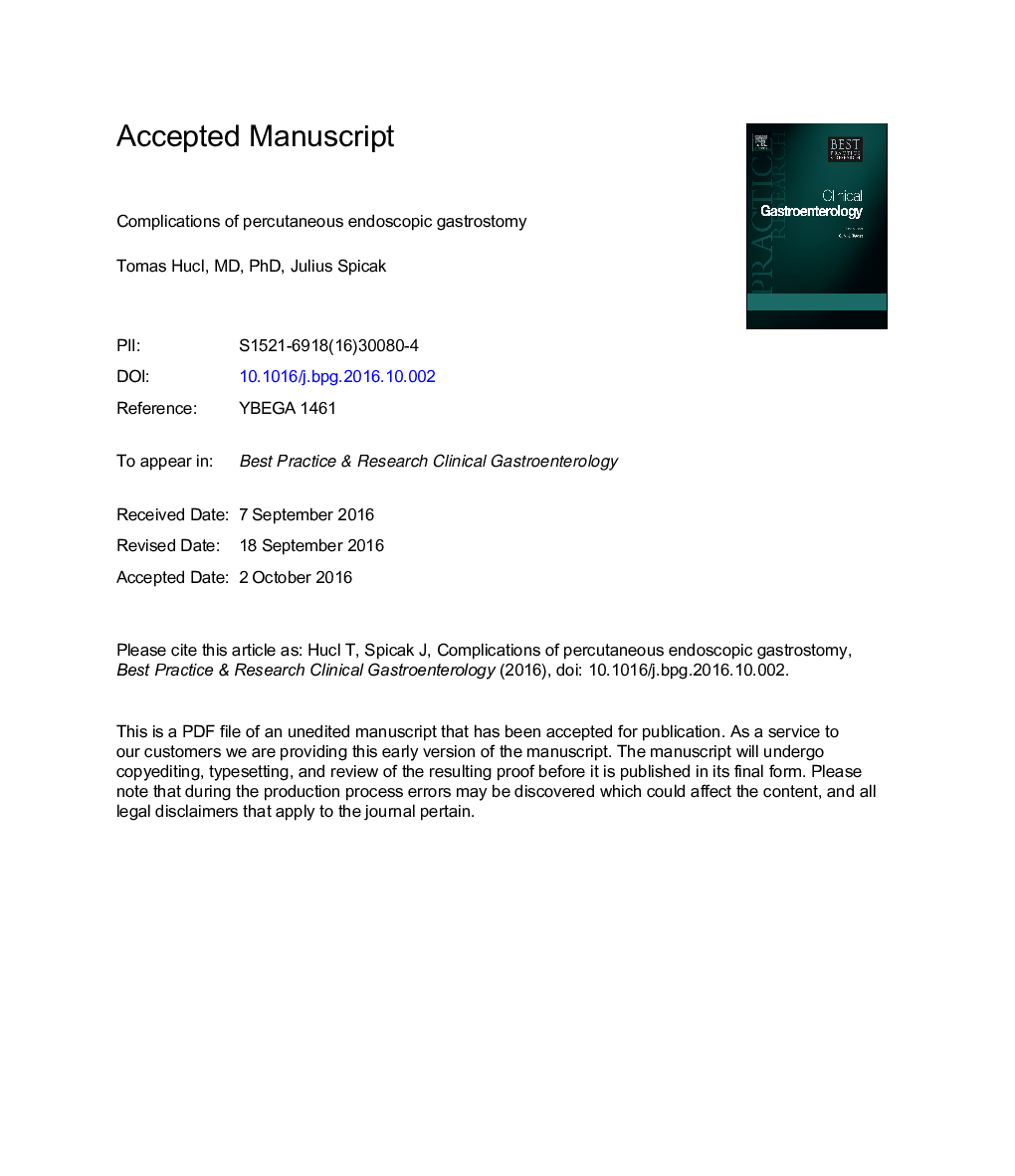| Article ID | Journal | Published Year | Pages | File Type |
|---|---|---|---|---|
| 5654530 | Best Practice & Research Clinical Gastroenterology | 2016 | 28 Pages |
Abstract
Percutaneous endoscopic gastrostomy (PEG) has become the method of choice for mid-to long-term enteral feeding. The majority of complications that occur are minor, but the rare major complications may be life threatening. Some complications occur soon after tube placement, others develop later, when the gastrostomy tract has matured. Older patients with comorbidities and infections appear to be at a greater risk of developing complications. Apart from being aware of indications and contraindications, proper technique of PEG placement, including correct positioning of the external fixation device, and daily tube care are important preventive measures. Adequate management of anticoagulation and antithrombotic agents is important to prevent bleeding, and administration of broad spectrum antibiotics prior to the procedure helps prevent infectious complications. Early recognition of complications enables prompt diagnosis and effective therapy.
Related Topics
Health Sciences
Medicine and Dentistry
Endocrinology, Diabetes and Metabolism
Authors
Tomas MD, PhD, Julius (Professor),
